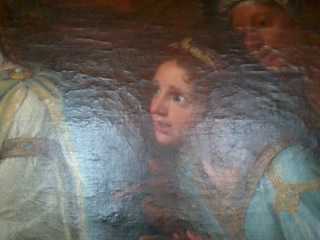“A Smoking Party” was a common XVII century pass-time; yet the presence of a sleeping figure in the center of the composition begs a question about the contents of those pipes; and since any kind of vapor may represent a dream; this seems only to confirm the interpretation according to which we observe the adverse effects of tobacco on the human brain. Yet this interpretation doesn’t hold water; and I must address the moralist content of the painting; for in the XVII century all social criticism was essentially religious, and therefore, the anti-smoking stance could not have been related to health issues, but would rather have to be linked to an already well-established sin, in this case idleness, and therefore condemned as a form of hedonism.
And by the way, at Chateau Versailles the Big Apartments were officially declared a non-smoking area; and so, those courtiers who needed a smoke break (for example, Saint-Simon) would have to sneak out to their cold and lonely rooms, which of course didn’t help their relationship with the anti-smoking Sun King.




















